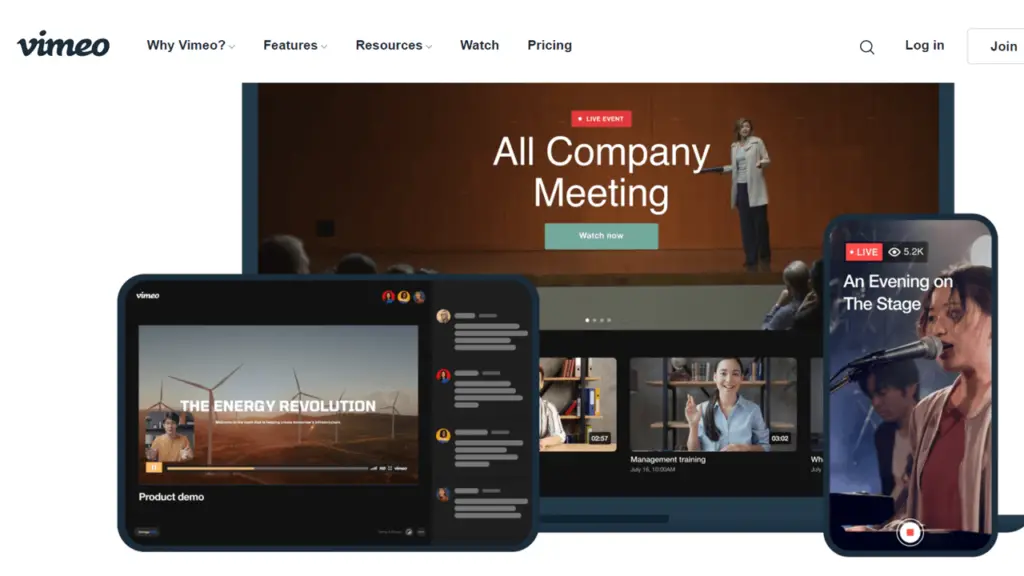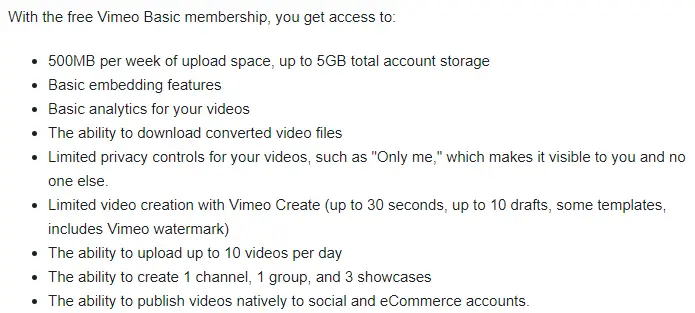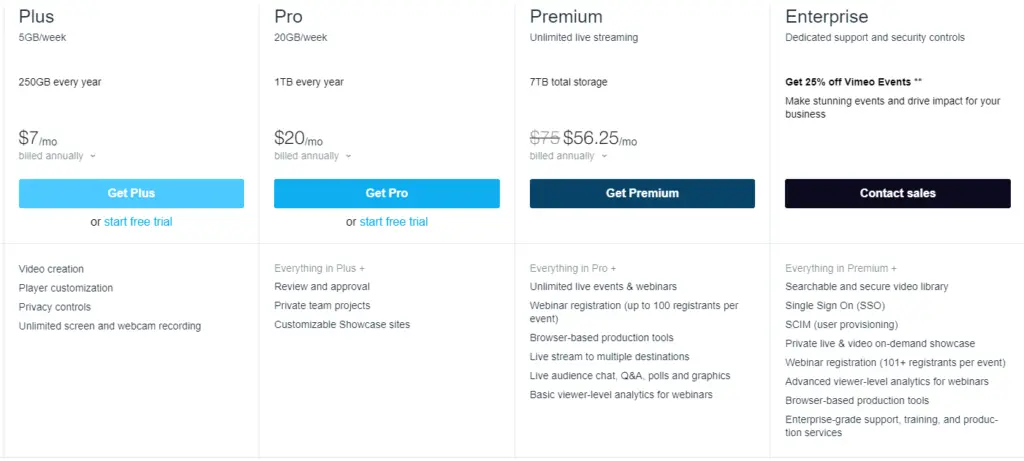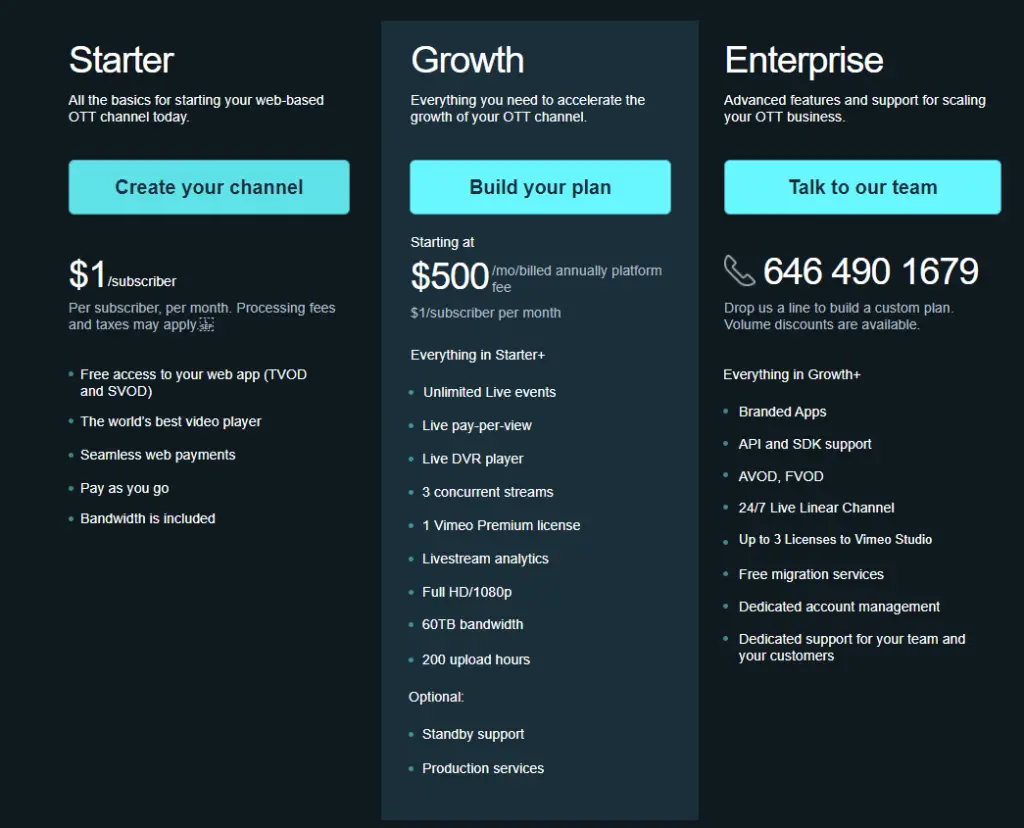
What is Vimeo?
Vimeo is an American internet-based company specializing in video hosting, sharing, and services. The company started its operations in 2004 and is one of the oldest names in the market. YouTube, a Vimeo competitor, is a much larger name, though. Despite that, Vimeo has been active for over a decade now. The platform has accumulated over 200 million users, of which 1.6 million are subscribers.
Vimeo started its operations in 2004 under Jake Lodwick and Zach Klein. Both were workers in Connected Ventures, the parent company of the well-known website CollegeHumor. Initially, Vimeo started as a side project to share and tag short videos. The inspiration behind this website came after CollegeHumor received significant views from a video clip.
Vimeo got its names from two words, “video” and “me”. Although the founders started the company in 2004, they didn’t work on it. The primary reason behind it was the growing popularity of the CollegeHumor brand. Therefore, Vimeo soon became a side project for the founders. Over the years, the company only experienced a small surge of new users. These users generated from word-of-mouth promotions rather than anything official.
IAC, a well-known digital company, acquired Connected Ventures in 2006. The primary reason for this acquisition was the growing popularity of CollegeHumor. At that time, the website was getting over 6 million visitors. Through the acquisition, IAC discovered the Vimeo property, which was a side project. It was also around the same time that Google acquired YouTube for $1.65 billion. Therefore, IAC started focusing on developing the Vimeo platform.
IAC instructed the founders and Andrew Pile to work on Vimeo full-time. However, YouTube was increasing in popularity worldwide. Therefore, the founders started focusing on providing services they thought YouTube lacked. Due to this, they offered content creators much better tools. By 2007, Vimeo also became the first video-sharing site to provide HD content to users. However, the founders soon left the platform due to creative differences with IAC. In 2009, the site went through a major redesign to put users’ focus on the video.
However, this process lasted until 2012. Furthermore, the platform still focused on shorter videos, which hampered its growth. On top of that, YouTube grew in popularity, which Vimeo couldn’t match. Over the years, the company made several changes and introduced various innovative products. Despite that, it remained in YouTube’s shadows in fame. Recently, Vimeo also spun off from IAC to create a public entity on its own.
What is Vimeo’s business model?
Primarily, Vimeo operates on an e-commerce business model. Through this model, the company reaches a wide range of audiences through digital media. In essence, Vimeo has a similar business model to YouTube and other similar platforms. However, it has personalized the experience that users get through that model. Within the e-commerce business model, Vimeo also uses several strategies to make money.
Apart from the e-commerce business model, Vimeo also follows a Business-to-Business (B2B) model. Within this model, the company employs a user content-based business model. This model is similar to YouTube and various other social media networks. In essence, the company allows content creators to upload videos to its platform. These content creators may include professionals, businesses, and media houses.
The content uploaded by those creators becomes the essential product for Vimeo. Unlike YouTube, however, it does not focus on generating revenues from the consumers. Instead, Vimeo gets compensated for its platform and services through paying content creators. This model is different from what other social networks use. Those networks use an ad-based model where the consumers must watch the ads to generate revenues.
Instead, Vimeo charges its content creators. However, the audience does not watch any adverts displayed on the video. Through this model, Vimeo stands out from the ad-based business model competitors. Similarly, it has allowed the company to create a specific market for its products. In that market, Vimeo does not compete with others since its business model varies from others.
The primary focus of Vimeo is content creators, which include professionals and businesses. It does not cater to the needs of individuals, unlike platforms like YouTube. Instead, it allows its customers to showcase their content through its unique platform. Through this strategy, Vimeo has become an alternative to other services. For most customers, it is where they can upload high-quality video content.
Overall, Vimeo uses a combination of various business models. The company primarily operates a user content-based model. However, it is different from other platforms where the ad-based revenue model is prevalent. Instead, Vimeo focuses on providing high-quality services at the content creator’s expense. Through this process, the company has created a separate niche for itself in the market.
How does Vimeo make money?
As mentioned, Vimeo does not use an ad-based business model. Therefore, most users may question how it makes money. The company uses various sources of revenue, which come from its content creators. On top of the membership fees, the company also generates revenues from several video-related services. Some of the ways in which Vimeo makes money include the following.
Subscription plans
Vimeo offers several subscription plans for its users. These include the Basic, Plus, Pro, Business, and Premium accounts. Furthermore, each of these comes with some limits and features. However, they also have different pricing attached to them. The basic subscription plan is free and does not require a membership. However, users must register on the platform to use it.
The basic membership plan comes with various restrictions. The Vimeo help centre provides the following details about the basic plan.

For some users, the features of the Basic plan may suffice. However, others may want higher limits. For those users, Vimeo offers three other plans. These plans compare to each other as follows.

Of the paid subscription plans, the Plus plan is the most inexpensive. However, it is one step above the basic Blan. The Pro plan is also sufficient for most professionals. However, these come with some limits. On the other hand, the Premium plan includes unlimited streaming. On top of that, it also provides several other features, including those in the two other subscription plans.
Lastly, the Enterprise plan is the highest level that users can get. However, the pricing for that plan is not available. Users have to contact Vimeo to receive customer features, although they may cost more. These subscription plans are the fundamental income source for the company.
Vimeo On Demand
Vimeo also has a feature that allows users to purchase high-quality videos from those who make them. This way, they can support the creators who receive 90% of the revenues. It also implies the company makes 10% of any sales through this feature. Besides buying videos, content creators can also allow users to rent them. Vimeo provides its platform for those videos and also offers users to subscribe to the creator.
Vimeo OTT
Vimeo also provides an OTT platform for users to transform their video content into a full-scale subscription service. With this platform, content creators can subscribe to three offered plans. This way, they can stream their videos similar to other OTT platforms. For these plans, Vimeo has a specific revenue model. These plans include the following.

Vimeo Stock
Vimeo stock is the company’s marketplace for royalty-free video footage. For these footages, Vimeo charges its customers a fee. Vimeo Stock is a complimentary service that allows users to build their projects quickly. It also includes various templates for users to use for their content creation. However, the company charges a commission-based fee for these contents. Usually, users have to pay 30-40% of the earnings from their videos to Vimeo.
Conclusion
Vimeo is an online video hosting, sharing, and services company. It is similar to YouTube in its platform. However, it focuses on content creators, including professionals and businesses. Vimeo’s business model involves several strategies to generate revenues. These strategies help the company attract more customers. Similarly, Vimeo makes money through these strategies and the services listed above.


